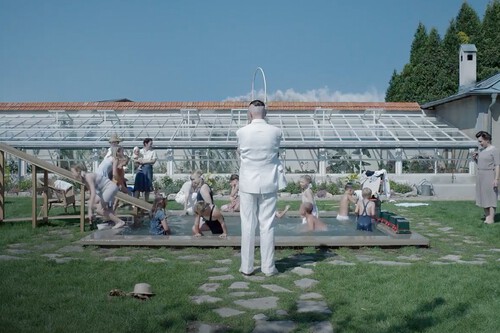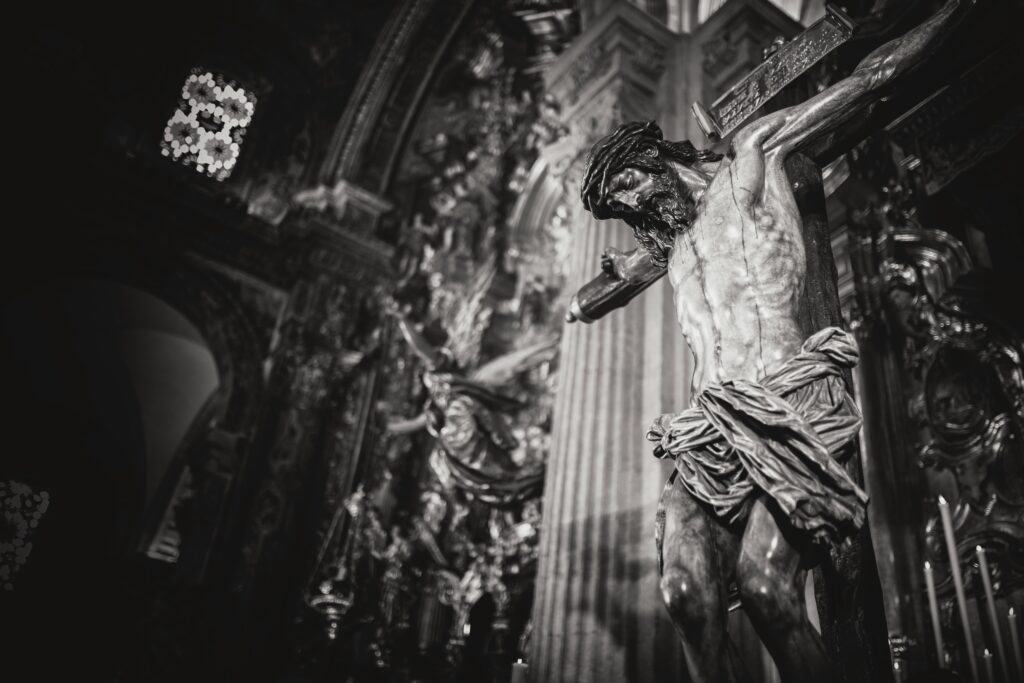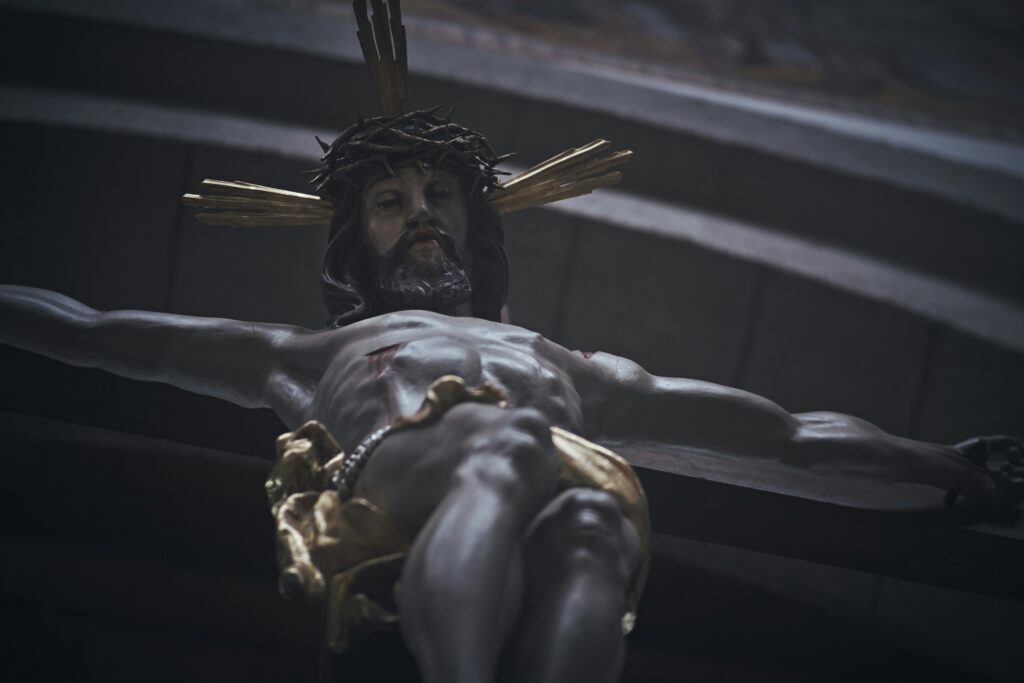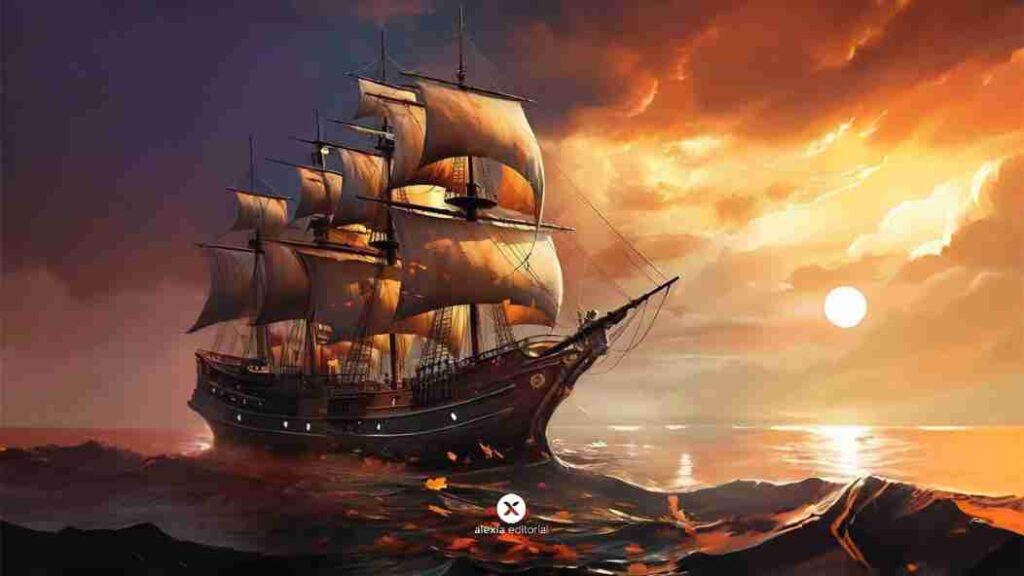Cinema as a mirror of the Europe of the walls that has forgotten the Holocaust
“The area of interest” and “I captain”

The filmmakers Jonathan Glazer and Matteo Garrone move us ethically and politically with two films: The Zone of Interest and I Captain, which warn about the growing racism of a selfish Europe, clinging to preserving its fictitious paradise with walls that isolate it from the sufferings of the rest of the world. Glazer evokes echoes of the Holocaust in a film about the idyllic life of Auschwitz commander Rudolf Höss and his family while thousands of Jews were gassed in the extermination camp, separated by a wall from the luxurious home. Garrone, for his part, points to the drama of immigration and the mafia business, based on the odyssey of two young Senegalese people who dream of a promising future in Europe.
How far does our tolerance, indifference and complicity with the horrors of the world reach? Or, better yet, what are we capable of doing to avoid risking or seeing our comfort altered, and even prevent reality from ruining moods of permanent joy and happiness, regardless of what is happening around us?
Directors Jonathan Glazer and Matteo Garrone invite us to reflect on this in The Zone of Interest and I Captain. They are two films with different themes, although only in appearance, because they come together in both an urgency and a warning about our choices to maintain fragile and fictitious personal paradises, as in the rise of hatred of migrants and the growing racism of a Europe that has replaced the founding values of fraternity and solidarity with thousands of kilometers of walls. Some are made of brick and others are based on ad hoc stories or legislation, to protect themselves against migrants and refugees seduced by the european dream. They are new debased and subtle ways of justifying genocides that undermine “the (re)civilizing project” of Europe after the Holocaust.[1] The tragedy that has been a lesson and reference for encounter and European moral unity seems to fade in time.
Paradise without views of the horror of Auschwitz
Rudolf Höss and his wife Hedwig (characters played by Christian Friedel and Sandra Hüller) talk about returning to a spa in Italy in the summer, play with their children in a swimming pool with a slide, show off the beauty of the flowers in their garden, hold meetings with friends in their luxurious house and bathe in a nearby river. They inhabit the closest thing to a paradise, if it weren’t for the fact that it is separated only by a wall from the horror and hell of the Auschwitz concentration camp. The gray smoke from the chimneys tirelessly testifies, day and night, to the sacrifice of thousands of human lives, first gassed and then taken to crematorium ovens to dispose of the corpses. Screams, dogs barking, crying and gunshots are the background noise. But the Höss family lives oblivious to what is happening so that nothing disturbs their placid and idyllic life. Hedwig likes to be called “the queen of Auschwitz.” She is proud of the life of luxury and power provided by her husband, the commandant of the concentration camp.
In The Zone of Interest[2], by English filmmaker Jonathan Glazer, there is not a single direct image of the horror or catastrophe of the Holocaust. Needless. Follow in the footsteps of Claude Lanzmann in his monumental documentary Shoah. If this was based solely on testimonies, Glazer resorts in his fiction to the sound that, like an echo, separates the truth from the lie. The director uses black and white to allude to the concentration camp, and color to portray the alienated life of the owners of Auschwitz.
Although, there are some scenes that reveal the consequences of living with evil and trying to naturalize it. One of the maids, in charge of taking care of the family’s baby, needs to be drunk all day to escape from the terrible and overwhelming reality. Hedwig’s mother visits her daughter, proud of her prosperity, and a few days after arriving at the house, she leaves horrified, after a night in which the reflection of the fire in the concentration camp’s chimneys makes her aware of the tragic reality that exists behind the wall. She leaves a note for her daughter – whose content is unknown to the viewer, but it is easy to imagine – which Hedwig burns so that nothing disturbs her state of happiness. It is shocking how the eldest son of the family, a teenager dressed in the uniform of the camp guards, without any remorse locks up a little brother in a greenhouse in the garden, in the middle of winter. As the only response to the suffering and cries for help and succor, the young man smiles an icy smile and plays with a baton in his hands. The same one that the Auschwitz guards use to beat the prisoners.
At all times, the director of the film divides the viewer’s attention, dissociated in the contradiction represented by the childish and banal images of the Höss’s placid life and the echoes of horror coming from the concentration camp. At the same time, internal dialogue, reflection on what we are seeing and its extrapolation to our present is inevitable. The wall of Auschwitz that separates the apparent paradise from hell reflects like a mirror the kilometers of walls and fences, with which Europe tries to cling to its fragile and fictitious comfort, isolating itself from sufferings such as that of Gaza, that of Ukraine, and others; many genocides that the media have stopped telling us about, but which have not ceased to exist. And it also refers us to other less visible walls, some in the form of hate stories, others of legislation justified in security that shields Europe against migration and asylum, when it is not the sea itself that makes it easier to end the lives of who come in canoes and rafts to “make us uncomfortable.” In The Zone of Interest, it is advisable to pay attention to the language used by the Nazis to avoid recognizing that the prisoners in the camps are people and have intrinsic dignity. There is talk of concepts such as “the load” of the ovens, performance, operability, logistics… But, there is no reference to the person or the action of killing and murdering one’s neighbor. The same thing happens, as we will address below with Matteo Garrone’s film, when talking about migrants, about occupants on the rafts, reduced to numbers or statistics.
It is pertinent to emphasize that Jonathan Glazer resolves with extraordinary mastery and humanity the difficult frontier that Lanzmann already warned about in his documentary Shoah, to which we have referred previously. No matter how much he shows a film about the Holocaust, the reality was always much worse. But if, on the contrary, nothing is revealed, there is a risk of underestimating a moral and humanitarian catastrophe that really occurred. A monstrous crime for which Europe is partly to blame because it could have intervened sooner and did not.
The european dream of Seydou and Moussa
For his part, the Italian filmmaker, Matteo Garrone, with a staging and plot different from Glazer’s, also contributes to pointing out the contradictions, alienation and loss of the european moral compass with the film, I Captain. Garrone places us before the odyssey of two young Senegalese people, Seydou and Moussa (played by Seydou Sarr and Moustapha Fall), who dream of a more promising future in Europe. Their desire is to be famous rap singers and improve the lives of their families. On their way, they meet others who share the european dream, for different reasons, fleeing wars and hunger. The trip turns into a nightmare. The journey involves crossing the hostile Sahara desert, encountering guerrillas, detention centers like those in Libya, the greed of the mafias that traffic in human dreams and desires, being enslaved, the dangers of the sea itself and, finally, arriving to a Europe that welcomes us with open arms, but also one that has seen the migrant as an enemy that can compromise public resources and alter the false peace of another fictitious paradise.
With I Captain, Garrone completes the trilogy formed by Terra de Mezzo (1996) and Ospiti (1998), dedicated to migration, one of Europe’s most bleeding wounds. It is true that the director does not point to a specific European country, but he forces us to look and it is difficult to respond with indifference or not feel challenged.
Seydou is forced to take the helm of an old ship, loaded with 250 people and without any experience. His main concern, at all times, is that no one dies on the journey. It should be noted that the protagonist of the film, Seydou, relives in fiction the true story of his arrival in Italy. Furthermore, the extras on the ship were not actors or actresses, but people who had actually faced the terrible journey.
The film makes contradictions visible and challenges prejudices about suffering that is tolerable for some, but not for others. Furthermore, it helps make us aware that, behind the numbers, there are people who dream and long, with as much right as we do to seek a better life.
As a coda, it must be emphasized that the person is an objective moral reality, a valuable and worthy being, not a means. Therefore, not losing sight of who our actions affect allows us to establish boundaries and adequately perceive a sacred reality.[3] And finally, add a discrepancy with the criticisms of both films that focus on the evil of human beings and their capacity to harm others. The studies of the philosopher, José Sanmartín[4], and top-level neuroscientific research such as that of Natalia López Moratalla[5] combat these erroneous arguments. We are not genetically violent, quite the opposite. We are biologically prepared to be supportive, care, cooperate with others and make ethical judgments, but also to imitate what we see. Empathy unites us as a human family; another thing is that we repress it and, to make matters worse, ignore cultural and environmental influences.
Amparo Aygües – Master’s Degree in Bioethics – Catholic University of Valencia – Collaborator of the Bioethics Observatory
___
[1] Elsaesser, T. (2021). european cinema and continental philosophy. Córdoba: UCOPress, p. 33.
[2] Film adaptation of the novel by Martin Amis titled like the film.
[3] Glover, J. (2013). Humanity and inhumanity in the 20th century. Madrid: Cátedra, p. 46.
[4] Sanmartín, J. (1987). The new redeemers: reflections on genetic engineering, sociobiology and the brave new world they promise us. Barcelona: Anthropos. Also, Sanmartín, J. (1990) Technology and human future. Barcelona: Anthropos
[5] López Moratalla, N. (2015). Neuroethics: The moral endowment of the human brain. Bioethics Notebooks, XXVI, pp.415-425.
 (EN)
(EN)
 (ES)
(ES)
 (IT)
(IT)





